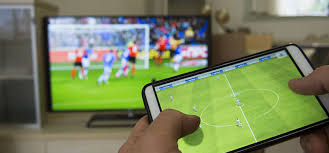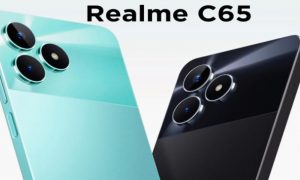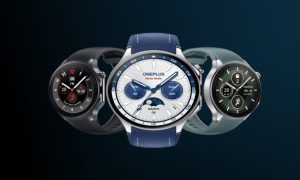We’re going to show you how to show off photos, videos and content from your Android phone on your TV.
To connect an Android phone or tablet to a TV you can use an MHL/SlimPort (via Micro-USB) or Micro-HDMI cable if supported, or wirelessly cast your screen using Miracast or Chromecast. In this article we’ll look at your options for viewing your phone or tablet’s screen on the TV.
Tablets and phones are perfect for individual users – lightweight with very long battery life, and with bright, sharp screens that make light work of everything from watching films to reviewing photos.
Bigger crowds call for bigger screens, though: here’s how to connect your Android tablet or phone to your TV without spending a fortune or drowning in a sea of cables.
We live in a golden age of content thanks to streaming services such as Netflix and Amazon Prime Video. However, this isn’t so good when you want to share the experience with multiple people.
Your TV is perfect for this and we’ll explore your options when it comes to getting your mobile content on the big screen. We’ll also look at the services that will let you share your subscriptions, photos and videos on the big screen – and those that won’t.
Wirelessly connect Android to TV
There’s little to beat the wow factor associated with beaming video straight from a tablet to your TV. The good thing about Android is that there’s more than one way to do it. Miracast is a wireless standard that creates an ad-hoc network between two devices, typically your tablet and a set-top box which supports Miracast.
An increasing number of TVs support Miracast without the need for extra hardware. Miracast uses H.264 for video transmission, which means efficient compression and decent, full HD picture quality.
Better yet, Miracast supports Digital Rights Management (DRM), which means services such as iPlayer and YouTube can be streamed to a TV. Not all services work, though – see below. Android devices running Android 4.2 support Miracast.
An alternative (and most user friendly) is Google’s Chromecast. This inexpensive £30 ‘dongle’ plugs into a spare HDMI port on your TV and connects to your wireless network. Chromecast support is burgeoning, which means content from services such as iPlayer, Netflix, BT Sport and others can be played with the Chromecast dongle doing all the legwork instead of your tablet, and that’s good news for battery life.
It’s possible to use Chromecast to mirror the display on your Android device, allowing you to hit play on a tablet and have (non DRM-protected) video start playing on your TV. The same goes for anything the screen can display, including apps, games and photos. You can also pick up the pricier Chromecast Ultra to stream 4K content too.
BBC’s iPlayer also supports AirPlay. Note that you can’t use Sky Go to watch Sky programmes on your TV via AirPlay. For more on iPad and iPhone streaming, head here for our step by step guide
Which devices support Chromecast mirroring?
Mirroring on Chromecast used to be only supported by a handful of devices, but now any Android phone running v4.4.2 or higher is able to support the Cast Screen feature.
There is however a list of Android devices that have been tested to work best for Android Screen casting – see Google’s article.
HDMI
HDMI (High Definition Multimedia Interface) is the interface standard du jour. If your TV was bought in the last decade it has an HDMI port, as does almost every set-top box, games console and a decent number of still and video cameras.
The benefit to HDMI, apart from its ubiquity (which means it’s cheap), is that it accommodates HD video and audio simultaneously, allowing you to connect devices without worrying about watching a film in full HD but having to make do with your tablet’s tinny speakers. An HDMI output is an advantage that many Android tablets have over Apple’s iPad.
HDMI plugs come in three sizes. Regular HDMI (or Type A, left) are the full-size ports you’ll find on devices where space isn’t an issue: think TVs, laptops and games consoles. The sockets you’re likely to find on tablets and phones will be either Type C (also known as Mini HDMI, middle) or Type D (Micro HDMI, right). Of these, Micro HDMI, or Type D, is the smallest.
Whichever type of port your tablet has, connecting it to an HDMI socket isn’t going to cost you the Earth: expect to pay under £10 (under £5 in some cases) for an HDMI to Mini- or Micro-HDMI cable.
A range of tablets have either HDMI or its miniaturised variants. It’s the most straightforward approach.
You’re not limited to buying a tablet with an HDMI output to connect it to your TV, though.
MHL or SlimPort
HDMI is easy to understand: it’s a port that only does one thing, after all. The drawback is that not all tablets have an HDMI output, and very few phones do. The good news is that a pair of widely-supported standards have emerged that allow Android owners to connect to external displays using their microUSB port.
The standards in question are MHL (Mobile High Definition Link) and the newer SlimPort. Both look the same, which is stating the obvious as they simply use the microUSB port on an Android device to deliver video.
Like HDMI, SlimPort and MHL support both video and audio, with up to eight channels of surround sound available. Both normally require breakout boxes: a small dongle between your device and TV that converts the signal from your phone to one compatible with HDMI.
Expect to pay between £5 and £25 for either a SlimPort or MHL signal converter. That makes things a little more expensive than using a tablet with an HDMI port, but MHL in particular is supported by a wide range of phone and tablet makers.
MHL has undergone various versions: we’re currently on version three, which improves the maximum resolution to 4K – though costs slightly more. This is the same as SlimPort, and means both standards offer pretty similar technical specs.
One advantage that MHL has is support from various TV manufacturers: look on the back of your TV, and if the HDMI port has an MHL logo above it, you can use an HDMI to micro-USB cable to connect the two – the HDMI cable will pass power to your tablet or phone, meaning no need for extra adapters or cables. Bonus.
If your TV doesn’t support MHL, or you have a SlimPort device, you’ll need an adapter. SlimPort users should expect to pay around £15, while MHL users may spend slightly less. If you’re using MHL it’s likely you’ll need an external power source: MHL 3 can draw up to 10 watts from its host device.
With SlimPort no external power supply is needed (it draws a small amount of power from your device), making setup less cluttered. Both devices need a tablet’s screen to be on, though, so breakout boxes normally come with a microUSB port so a charger can be connected.
Support for MHL and SlimPort varies enormously. With three different versions of MHL available plus SlimPort, you’ll need to check the specifications of your device before buying an adaptor.





































